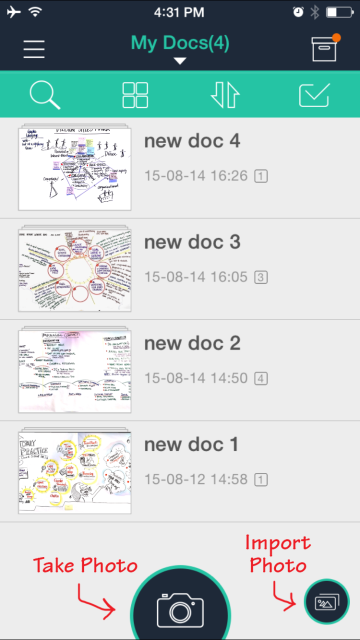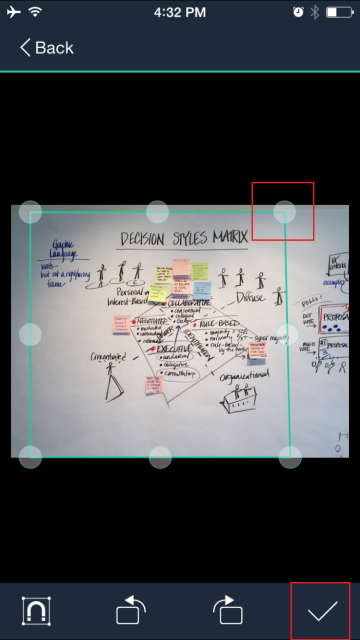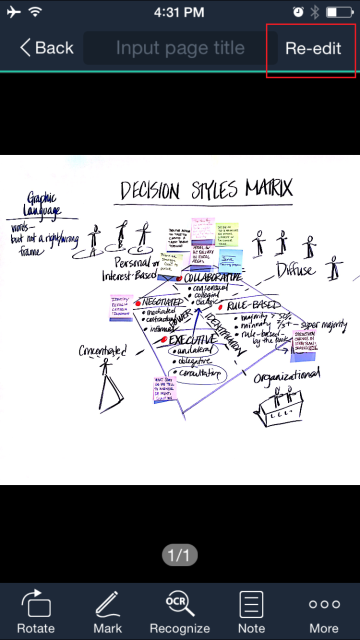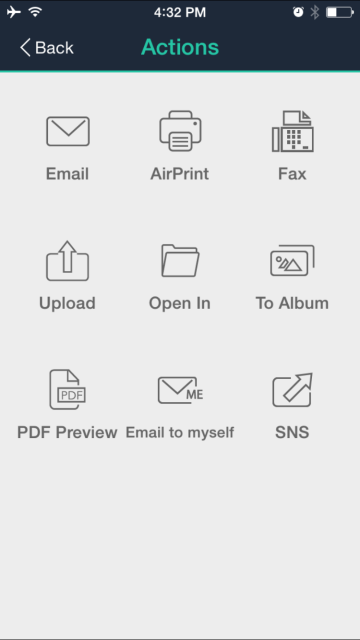One of the participants in last month’s Advanced Visual Facilitation workshop pointed me to a new (to me) app for cleaning photos, CamScanner. I’m pretty happy with the way it cleans charts, and like many of you I’m having trouble with ScanScribe as my laptop advances technologically and poor ScanScribe does not.
CamScanner is an iOS app (there is also an Android version). It can open photos from your phone or iPad’s camera, or you can take photos with the app itself. Once you get a photo in there, you can correct the keystoning (straighten the edges), drop the gray out of the background paper, brighten the image, and transfer it to your laptop for final clean-up or editing. To my delight, I discovered that I could even do the transfer to my laptop even while sitting on a plane with no internet access.
You can also create an account with CamScanner to get cloud storage for your documents, but I didn’t. You can do everything described below without creating an account.
Here’s the original photo I was working with, taken on my iPhone:
And here’s the way it came out of CamScanner after less than a minute of work:
Get a Photo Into the App
Launch the app and either use the camera button to take a photo (I haven’t tried this with a chart so I don’t know what the results are like), or use the import button (the smaller button) to grab one from your photo roll. You can open a few at a time.
Correct the Keystoning
If you added a single image, the app takes you to the keystoning correction right away. Match up the circles with the corners and middles of your chart and click the checkmark to save.
If you added several images, it looks like the app does the keystoning for you. Tap one of the photos you imported to look at it more closely. If the auto-correction is not quite right just tap Re-Edit (top right) to do it yourself.
Correct the Color
After you do the keystone correction, the app applies Magic Color almost as if reading your mind. That’s the one that drops out the gray paper background. You can check it against the original by tapping the Original button, or play with the other settings, but Magic Color usually does the job. Sliders at the bottom let you adjust the magic, the brightness, and the saturation. Click the check mark when you like what you see.
Wait… Was That an OCR Button?
Yes, yes it was. There are several languages you can choose from, but don’t get your hopes up. I haven’t found the OCR to do very much with my hand-drawn charts.
Put Them on Your Computer
Hidden behind the More button, the app has several ways to share your photos (email, text, upload to social media, connect with apps like Dropbox, Evernote, and others, and so on).
If you save them to your Camera Roll, you can use Air Drop to transfer them to your computer. I was utterly delighted to be able to do this on a plane, because I needed to clean one last chart to complete a project and Photoshop wasn’t cutting it. There was too much variation in the background. Since I had the photo on my phone already and plenty of time on my hands, I decided to give CamScanner a try. It did a great job, I saved it back to my phone, and then I used Air Drop to share the photo back to my laptop in about ten seconds.
Finish Up in Photoshop
CamScanner leaves a bit of garbage behind, but it was very easy to clean up compared to trying to do the whole chart in Photoshop.
And there you go! I definitely recommend it for speeding up your chart cleaning if you’ve lost ScanScribe.
What else have you found to quickly clean charts? I’d love to explore more options.







